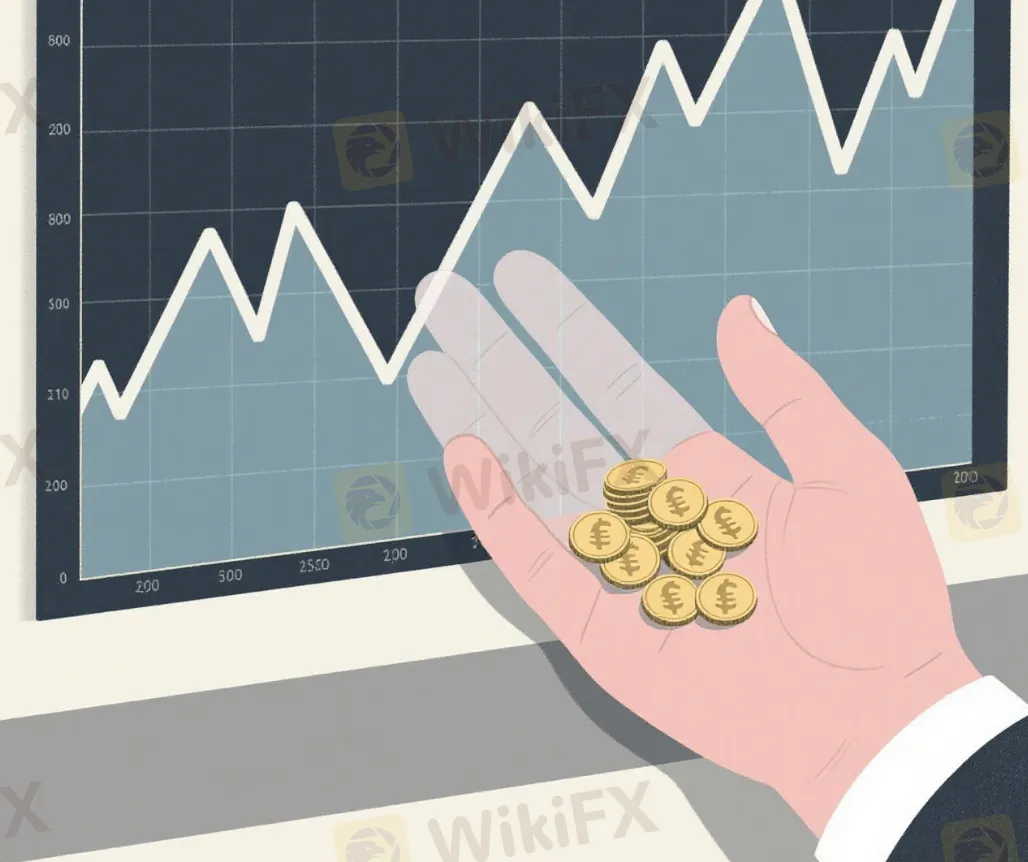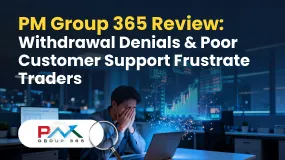Abstract:Understanding what is hedging in forex and how to hedge forex trades is a sign of a maturing trader. It represents a shift from purely seeking profits to incorporating sophisticated defensive strategies. Hedging is fundamentally about risk management and protecting capital, not creating new profit opportunities. It's paying a small, known cost to protect against a large, unknown loss.
The decision to hedge should never be taken lightly. It must be a calculated choice, carefully weighing the perceived risk against the definite cost of the protective trade. It's a tool for specific circumstances, not an everyday strategy.
Forex hedging is a way to protect your trades from losing money when prices move against you. Think of it like buying insurance for your car. You pay a small amount to protect yourself from big losses if something bad happens. Similarly, when you hedge in forex, you pay a cost to limit potential losses if the market turns against you.
The main purpose of hedging is not to make more money. It's a tool to manage risk. Its goal is to create a safety net so you can trade with more control, even when markets are volatile.

In this guide, we will explore this technique in detail. We will go beyond the basic definition to give you a clear framework for understanding hedging strategies. You will learn why traders choose to hedge, discover different ways to hedge forex trades, walk through practical examples, and understand the real costs and benefits. By the end, you will know if hedging is right for your trading.
Why Hedge in Forex?
Understanding why traders hedge is the first step to using it effectively. It's not something to use on every trade. It's a specific tool for specific situations. For traders looking to improve their skills, recognizing these scenarios is key to better risk management.
The reasons for hedging are mostly defensive. They focus on protecting money rather than making aggressive profits. Here are the main reasons a trader might hedge:
- Reducing Risk: This is the primary reason. Hedging protects an open position from potential losses during uncertain or volatile market periods.
- Protecting Profits: Imagine you have a trade making good money, but you think the price might reverse soon. A hedge lets you lock in some of those profits without closing the position. This gives you time to reassess the market.
- Surviving Big Events: Major economic news releases can cause wild price swings. These include job reports or central bank announcements. Hedging helps you hold a position through these events with less risk.
- Holding Long-Term Positions: For traders who hold positions for days, weeks, or months, hedging reduces risk from overnight gaps or short-term price movements. You can do this without abandoning your long-term outlook.
A Simple Hedge Example
Let's break down how a simple hedge works. This direct approach makes the theory easy to understand. It's the foundation for more complex strategies.
Here's a scenario: A trader believes the Euro will strengthen against the US Dollar. They buy 1 standard lot of EUR/USD at 1.0850. Their analysis looks good, but they're worried about an upcoming central bank speech. This event could cause unexpected volatility and a sharp, temporary drop in price.

To protect their position, the trader executes a hedge. They open an opposing trade by selling 1 standard lot of EUR/USD at the current market price of 1.0860.
Now, the trader is both long and short the same currency pair with the same position size. This creates a “locked-in” position. The profit and loss are frozen, minus transaction costs. If EUR/USD drops, the original long position loses money, but the new short position gains the same amount. If the price rises, the long position gains while the short position loses. This neutralizes the position's exposure to market movements.
The net result is a small, fixed loss equal to the spread costs of both trades. The trader has successfully insured their position against a major adverse move. However, this type of “perfect hedge” is restricted by some regulators. For example, the First-In, First-Out (FIFO) rule in the United States doesn't allow it. We will explore this and alternative strategies next.
How to Hedge: 3 Strategies
Once you understand the basics, the next step is learning practical methods. Knowing how to hedge forex gives you a versatile toolkit for risk management. Different situations call for different approaches. Each has its own rules, benefits, and drawbacks. Here are three common and practical hedging strategies.
Strategy 1: Direct Hedging
This is the “perfect hedge” strategy we showed in the example above. It's the most straightforward method. It involves opening a position that's the exact opposite of your current trade on the same currency pair. If you're long 1 lot of AUD/USD, a direct hedge would be to short 1 lot of AUD/USD.
The main function is to create temporary net-zero exposure. It pauses the profit or loss on your original position, protecting it from market fluctuations. This is useful when you want to hold a position but expect short-term, high-impact volatility. You can implement the hedge before the event and remove it once the market stabilizes.
The main advantage is its simplicity and perfect risk offset. However, it has costs. You will pay transaction costs—the spread and/or commission—on two separate trades. This creates a small, guaranteed loss. The biggest drawback is regulatory restrictions. This practice is prohibited in some major jurisdictions, most notably the United States. The FIFO rule requires that the first position opened must be the first one closed. This prevents traders from holding simultaneous long and short positions on the same pair.
Strategy 2: Correlation Hedging
For traders under FIFO regulations or those seeking a more sophisticated approach, hedging with correlated pairs is a powerful alternative. This method uses a second, highly correlated currency pair to offset risk in the primary position. Currency pairs don't move alone; many show predictable relationships.
This strategy works in two ways:
1. Hedging with Negative Correlation: Negatively correlated pairs tend to move in opposite directions. For example, EUR/USD and USD/CHF have a strong negative correlation. If you're long EUR/USD and want to hedge, you could also go long USD/CHF. If EUR/USD falls, USD/CHF is likely to rise, offsetting some losses.
2. Hedging with Positive Correlation: Positively correlated pairs tend to move in the same direction. For instance, EUR/USD and GBP/USD often move together. If you're long EUR/USD, you could hedge by shorting GBP/USD. If the US dollar strengthens broadly, both pairs would likely fall. Your loss on the long EUR/USD would be partially offset by the gain on your short GBP/USD.
Here's a table of common correlations:
Remember that correlations aren't static. They can weaken, strengthen, or even reverse over time. This method provides an imperfect hedge, but it's a compliant and flexible way to manage risk.

Strategy 3: Options Hedging
Using forex options is an advanced but highly flexible hedging method. An option is a contract that gives the buyer the right, but not the obligation, to buy or sell an asset at a specified price on or before a certain date. This “no obligation” feature makes it a powerful hedging tool.
Here's how it works:
- To protect a long position (you're long EUR/USD and fear a price drop), buy a Put Option. This gives you the right to sell EUR/USD at a predetermined price. If the market falls below your strike price, your option becomes profitable, offsetting the loss on your long position. This sets a “floor” for your potential loss.
- To protect a short position (you're short USD/JPY and fear a price rise), buy a Call Option. This gives you the right to buy USD/JPY at a predetermined price. If the market rallies above your strike price, your call option's value increases, offsetting the loss on your short position.
The main advantage is that your risk on the hedge is limited to the premium you pay. Another benefit is unlimited upside on your original trade. If the market moves in your favor, you can let the option expire worthless. Your profit is the full gain from your forex trade minus the option cost.
The downsides are complexity and cost. Options trading requires understanding premiums, strike prices, expiration dates, and volatility effects. Not all retail forex brokers offer options trading. The premium paid is a guaranteed, non-recoverable cost.
A Practical Walkthrough
Theory is one thing, but application matters most. To truly understand how to hedge a forex trade, let's walk through a realistic case study. This shows the decision-making process an experienced trader might use when facing a high-risk event.
Our scenario: We're holding a large long position of 2 standard lots on GBP/USD, entered at 1.2500. Our analysis suggests a long-term upward trend. However, the Bank of England will announce its interest rate decision in one hour. This event is known for causing extreme, unpredictable volatility. Our protective stop-loss is at 1.2440, representing a 60-pip, or $1,200, risk.
Step 1: Assess Risk and Objective
First, we clearly define the problem and our goal.
- Risk: The immediate risk is our stop-loss being triggered by a volatile reaction to the news. This is a $1,200 risk (60 pips x $10/pip x 2 lots).
- Objective: Protect the position from a potential sharp drop while keeping the ability to profit if the announcement is positive for the pound. Simply closing the trade or widening the stop-loss doesn't fully meet this objective.
Step 2: Compare Hedging Options
Next, we evaluate our available tools.
- Direct Hedge: Short 2 lots of GBP/USD. The advantage is perfect protection. The disadvantages are that it costs two spreads, locks in a small loss, and may not be allowed depending on our broker (FIFO rule).
- Correlation Hedge: Short a positively correlated pair like EUR/USD, or long a negatively correlated pair. The advantage is that all brokers allow this. The disadvantage is imperfect hedging. A UK-specific event might not move EUR/USD in a perfectly correlated way.
- Options Hedge: Buy a GBP/USD Put Option with a strike price near our position, around 1.2480, expiring after the announcement. The advantage is capped downside risk while leaving upside profit potential open. The disadvantage is the upfront cost of the option premium.
Step 3: Execute the Chosen Hedge
For this scenario, where we want protection but also want to capture potential upside, the Options Hedge is the best choice. We buy the put option. The premium we pay is our “insurance payment”—a known, fixed cost to protect against an unknown, potentially large loss.
Step 4: Manage the Position
Now we wait for the news. Two main outcomes are possible:
- Scenario A (Price Falls): The announcement is negative, and GBP/USD falls sharply to 1.2350. Our main long position is in deep loss. However, our Put Option has increased significantly in value. The gain from the option offsets most of the loss from our spot position. We can close both trades to limit damage to a fraction of what it would have been without the hedge.
- Scenario B (Price Rises): The announcement is positive, and GBP/USD rallies to 1.2650. Our main long position is in significant profit. The Put Option expires worthless. Our final result is the substantial profit from our long GBP/USD trade, minus the small premium we paid. We successfully navigated the event risk and captured the full upside.
The Pros and Cons
No trading strategy is perfect, and hedging is no exception. It's a powerful tool, but it comes with trade-offs. Understanding the full picture, including costs and limitations, helps you make informed decisions. Here's a direct comparison of advantages and disadvantages.
Common Hedging Pitfalls
Knowing how to hedge forex trades also means knowing how to avoid common mistakes. Many traders new to hedging fall into traps that negate the benefits or lead to losses. Being aware of these pitfalls is crucial for successful implementation.
1. Ignoring the Costs. This is the most frequent error. Traders focus so much on risk protection that they forget hedging has unavoidable costs. Whether it's double spreads, commissions, or option premiums, these costs can significantly reduce profitability over time. Always weigh the cost against the realistic probability and size of the risk you're avoiding.
2. Forgetting to Unwind the Hedge. Imagine your hedged trade moves strongly in your favor. In excitement, you close the original winning position but forget to close the losing hedge. That losing hedge is now an open, unhedged position that can accumulate further losses. Always treat the original position and hedge as a single unit to be managed together.
3. Over-Hedging. Fear can lead traders to hedge every small position at the slightest uncertainty. This is counter-productive. Hedging is for managing significant, identifiable risks like major news events or extreme volatility. Using it for everyday market noise will only increase costs and reduce profits.
4. Misunderstanding Broker Rules. This is a critical mistake. Before attempting a direct hedge, confirm your broker's policy. Trying to open an opposing position with a FIFO broker will result in your first trade being automatically closed, which likely isn't your intention. Always read your broker's terms or contact support first.
Is Hedging Right for You?
Understanding what is hedging in forex and how to hedge forex trades is a sign of a maturing trader. It represents a shift from purely seeking profits to incorporating sophisticated defensive strategies. Hedging is fundamentally about risk management and protecting capital, not creating new profit opportunities. It's paying a small, known cost to protect against a large, unknown loss.
The decision to hedge should never be taken lightly. It must be a calculated choice, carefully weighing the perceived risk against the definite cost of the protective trade. It's a tool for specific circumstances, not an everyday strategy.
Before using these strategies with real money, we strongly recommend practicing on a demo account. Get familiar with the mechanics, understand your broker's costs, and manage the entire lifecycle of a hedged trade in a risk-free environment. This practice will help you determine if hedging truly fits your trading style, risk tolerance, and overall goals.











